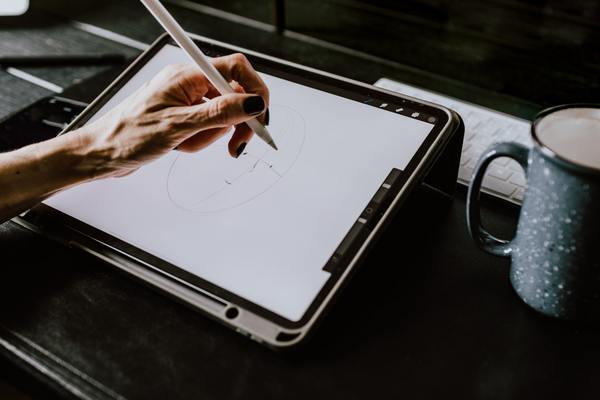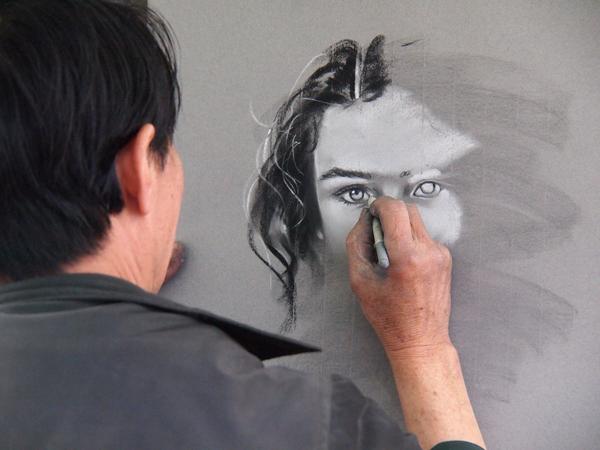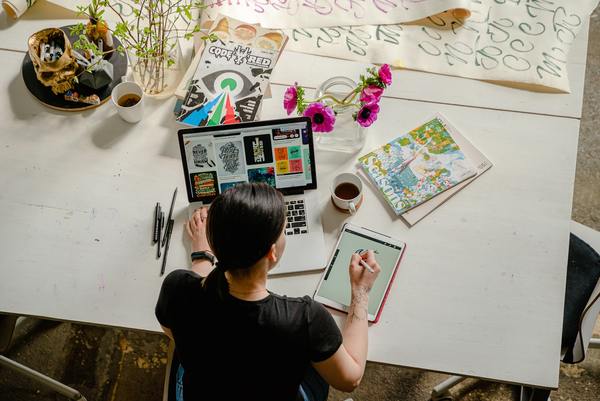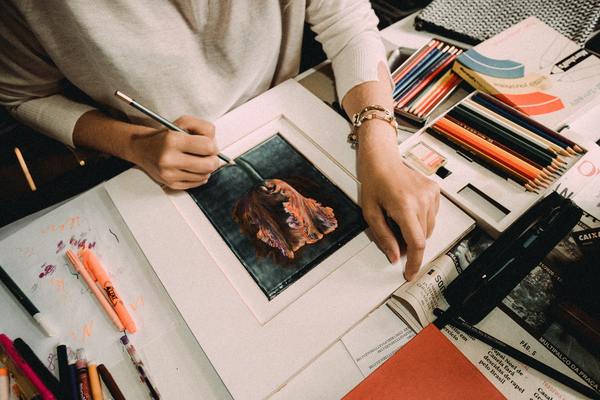If you’re planning to venture into visual arts, you’re probably thinking about which path you should pursue: digital vs. traditional art? The thing is, both have their boons and banes that can help aspiring artists choose a style depending on their capabilities, available materials, and learning methods. While nothing beats the original, recent technological advancements make the creative process more enticing to people who don’t usually pick up paintbrushes to create their own artworks digitally. Both methods of creating art are fun and worth the try but when you’re starting, you should focus on one first so that you can concentrate on improving your skills in the area. So, the battle begins: which should you try- digital vs. traditional art? Read below to discover more!

This has been a debate ever since gadgets became more accessible and cheaper to the public. Some artists view the age of digital art as an advantage to learn more skills, showcase their artworks, and create more art outside their studios and working area while some have viewed it in a negative light. For those who thought of the latter, they think that digital art will cause more plagiarism or stealing of artworks, devalue the real process of creativity, and make it easier for others to proclaim themselves as artists. These are just opinions coming from others so it shouldn’t really affect you when deciding which path to pursue. Instead, you should look at your preferences, strengths, and weaknesses, as well as the pros and cons that will be presented in this article.
The Battle Between Digital vs. Traditional Art
Accessibility
Digital Art:
- Many people have their own devices such as laptops, smartphones, and tablets.
- The initial cost of their touchscreen devices and computers is cheaper compared to buying professional artist supplies monthly.
- Many digital art applications are free. Though some require membership registration, you can purchase them at a minimal cost.
- You can bring your device anywhere you go.
- You can create your digital artworks wherever you are.
Traditional Art:
- You need to purchase different art supplies and mediums depending on what you’re planning to create.
- Art supplies are quite expensive, making them inaccessible for those on a budget.
- It’s hard to bring materials outside your studio or working area.
WINNER: Digital Art

Originality
Digital Art:
- Easy to reproduce with or without your permission.
- Others might copy your artwork and call it their own.
- When uploaded to the internet, it makes it easy for people to use your creation for their own purposes without your consent.
- Some will not give you credit for your work and spread it around social media without your knowledge.
Traditional Art:
- Difficult to reproduce.
- Most artworks do not come out exactly the same.
- Others will find it hard to steal your work.
- No mass production and duplication without your permission.
WINNER: Traditional Art

Efficiency
Digital Art:
- Requires no downtime for preparation of your work area, tools, art supplies, etc.
- Undo and redo buttons make it easier for you to correct mistakes and bring back something you accidentally erased or deleted.
- You can switch brushes and colors in a few swipes.
- Since you can bring your device wherever you go, you can work on your art if you have free time, almost anywhere.
Traditional Art:
- Requires preparation of your workspace, tools, art supplies, etc.
- Making physical artworks will need additional hours since there’s no button to erase your mistakes, delete what you don’t like, and so forth.
- Quite difficult to erase and make changes to what you don’t like on your working surface.
- It takes quite a bit to switch colors and brushes.
- You need to reserve a time dedicated to clean up your studio or working space.
WINNER: Digital Art

Productivity
Digital Art:
- Since creating digital art is more efficient than traditional art, it gives you more time to concentrate and finish your creation ahead of time. This can give you extra or additional time to create more artworks.
- Less time making and correcting mistakes means more productivity
Traditional Art:
- It takes more time to create physical artworks. In that regard, you don’t create as many drawings, paintings, etc. compared to when you do it digitally.
WINNER: Digital Art

Versatility
Digital Art:
- Despite the different textural effects and transitions that you have, the effects that you get are quite subtle.
- The attempt to layer mediums to achieve depth and dimension is hardly noticeable to the human eye.
Traditional Art:
- You can mix up your medium and media to add uniqueness and texture to your artwork that is difficult to duplicate digitally.
- You can use different materials on a single surface to create an interesting depth.
- Layering mediums are very noticeable.
WINNER: Traditional Art

Storage of Art
Digital Art:
- Requires no physical space to store your creations.
- You can upload it in a cloud so that you can have them on your different devices.
- Easy to showcase on social media.
Traditional Art:
- Requires physical space to store your artworks, which may require a lot of space, depending on how many artworks you create.
- Displayable.
WINNER: Tie
The Creative Process
Digital Art:
- You need to have a device with good specs to avoid lagging and technical difficulties.
- Despite the efficiency, your app may crash which can result in unsaved artworks- waste effort!
Traditional Art:
- You can experience how to paint, draw, etc. like a real artist because you have a physical connection to the medium- real artistic experience, as some would say.
- You can store your unfinished artwork in a safe and protected area to keep your artwork from getting ruined.
WINNER: Traditional Artwork

The Final Verdict
The battle between digital vs. traditional art is tough because they’re both good on their own terms. Now that we have examined the pros and cons of digital vs. traditional art, it’s time for you to select your path. Of course, you can select both but if you’re a beginner, we suggest that you focus on one first before you try the other. Before deciding, make sure to consider your strengths and weaknesses as well as the availability of the mediums you have.
